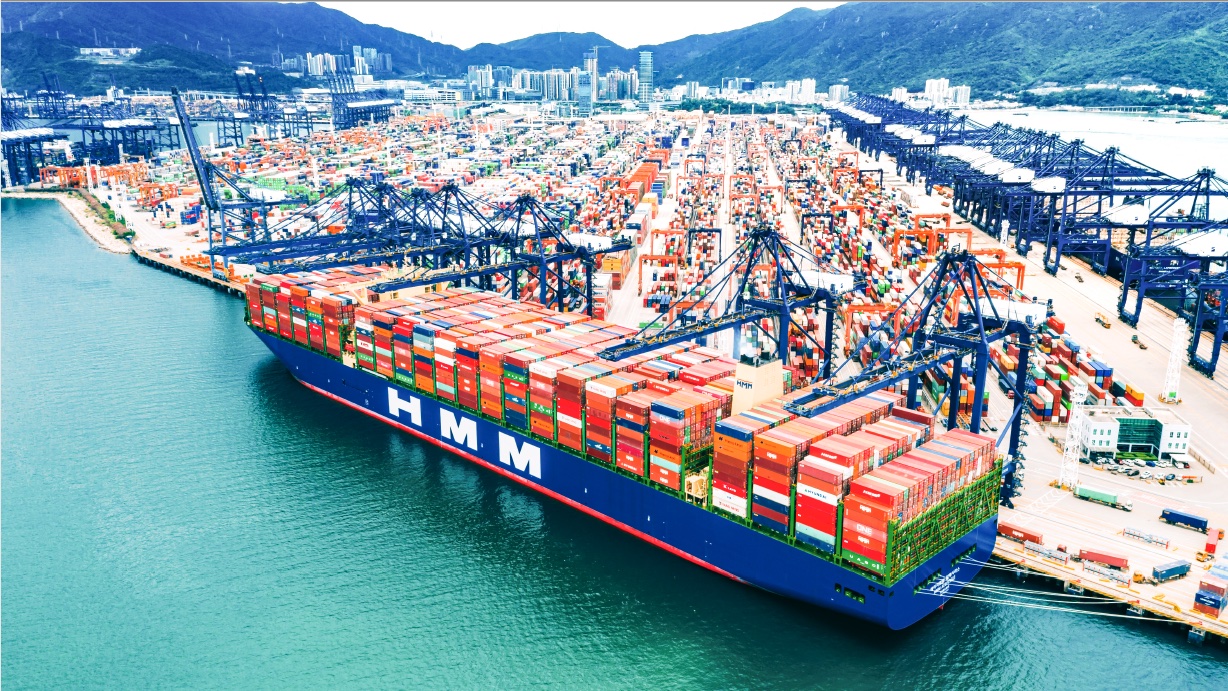The Korea Development Bank (KDB) has begun the process of selling “management rights” in Korean ocean carrier HMM seven years after the state-run bank took over the carrier from Hyundai Group following a liquidity crisis.
According to a Business Korea report, on March 2nd KDB announced that it was forming an advisory group related to the sale of HMM’s management rights in collaboration with Korea Ocean Business Corporation.
“Once the advisory group is formed, we will discuss overall strategies and then set a practical schedule for the sale of HMM through consultations with related organizations,” a KDB official said.
A Winding Path
HMM originated from Asia Merchant Marine founded by Hyundai Group in 1976 when ships built by Hyundai Heavy Industries were not delivered due to the Oil Shock in the 1970s.
In 1983, the company became Hyundai Merchant Marine.
In 2016, the ocean carrier was “separated from Hyundai Group due to a capital reduction and a change of the credit group’s debts into investments, and KDB and Korea Ocean Business Corporation became its major shareholders,” the Korean news service reported.
The following year, in 2017, Hanjin Shipping went bankrupt making Hyundai Merchant Marine, the number one shipping company in Korea.
In 2020, when its name was changed to HMM, freight rates soared following the COVID-19 crisis, pushing up HMM’s operating profits. In 2021 and 2022, HMM posted operating profits of 7.3 trillion won ($5.57 billion USD) and 10 trillion won ($7.62 billion USD) respectively.
The report said that companies that may be candidates to take over HMM include LX Pantos, Hyundai Glovis, CJ Logistics, SM Line, and Samsung SDS.
The report added that so far “none of them have been making any notable moves.”
HMM Announces $7.64 Billion in New Ships and Logistics
In July 2022, HMM announced that it will expand the capacity of its container shipping fleet to 1.2 million TEU by 2026 from the current 820,000 TEU.
The company plans a $7.64 billion investment in ships, ports, and logistics facilities. The Korean shipping company also aims to expand its dry bulk shipping fleet to 55 ships from 29 ships.
Kim Kyung Bae, president and CEO of HMM, said, "Our strategy is to ensure perpetual growth of HMM under the new vision - a global leading company generating sustainable value for the world."
HMM is also investing, in other areas such as digital, the company said. HMM plans to further develop the recently launched “Hi Quote” platform and add AI technology to improve its online 'e-platform.’ Prior to 2023, HMM benefitted from high freight rates during the COVID pandemic which provided a large amount of cash for investment.
HMM Plans To Build 21 New Ships
In an interview with AJOT at HMM’s corporate headquarters in Seoul, Korea, Jeremy Choi, senior vice president and head of Global Trade Management said that the decision by HMM to invest $7.64 billion is oriented toward expanding its global network so that it “can serve more customers investing in new terminals and also investing in new ships.”
Choi said that “HMM plans to build 12 new 13,000 TEU container ships with deliveries scheduled for 2024. At the same time, HMM is also investing in new carbon neutral methanol powered ships and has ordered 9 new 9,000 TEU ships that are also deliverable in 2025.
Choi says HMM believes that methanol is a strong alternative fuel and will reduce carbon emissions generated by HMM vessels, “However, we are also exploring other alternative sources, including LNG, ammonia, and hydrogen. There is a range of future options, and we will be looking carefully at all alternatives.”

Port of Busan and Growth of inter-Asian Trade
Choi praised the modernization efforts at the Port of Busan at Korea’s southern coast where the Port has built new container-handling facilities to accommodate growth in volume from imports and exports.
Choi noted that new trade is pushing the expansion at the Port of Busan and added that the Port provides HMM with transshipment capabilities that are especially important for the growing inter-Asia trade. These trades are being served by smaller ships, primarily between 2,000 TEU to 4,000 TEU sailing to and from ports in Southeast Asia including Vietnam, Thailand, Indonesia, Singapore, the Philippines, Oceana, and India. Choi noted that “these inter-Asia trades are growing far faster than trade with the United States and with Europe.”
Shake-Up of Ocean Carrier Alliances
Choi attended the global container trade review by analyst Lars Jensen at the Trans-Pacific Maritime Conference in Long Beach on March 1st. There, Choi heard Jensen say that the breakup of the 2M Alliance composing MSC and Maersk may be replicated in other ocean shipping alliances.
Jensen said in MSC’s case, the breakup in the 2M Alliance between MSC and Maersk means “MSC is aiming to go it alone and they can succeed in doing this…. The two parties’ interests are no longer aligned.”

Jensen believes the Ocean Alliance is also likely to announce a break-up during 2023, opening the market for a full reconfiguration for all the carriers: “The reason is that the carriers are diverging onto separate paths.” The Ocean Alliance includes OOCL, COSCO, CMA/CGM, and Evergreen.
Even THE Alliance, according to Jensen, could also face a break-up in the near future: “The break-up of the other alliances is going to put pressure on THE Alliance with the partners asking, ‘Who do we want to be allied with after the break-up of the other alliances?’”
The Alliance includes HMM, Hapag-Lloyd, ONE, and Yang Ming.
Choi said he does not see a reason that THE Alliance should break up because it has worked very well for HMM and as “it has been very beneficial to our business, we see no reason to want to change.”

